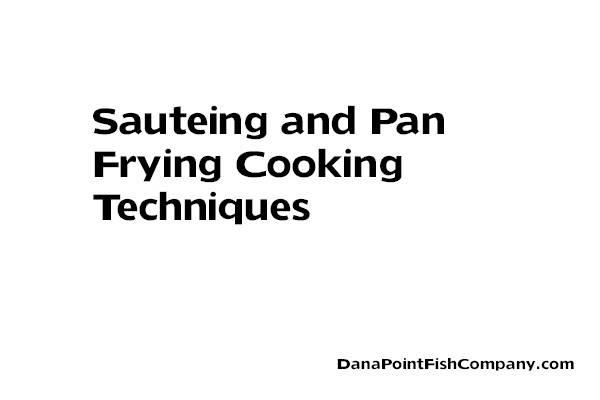Sauteing Fish
Saute is a cooking method that has three main components:
- Hot pan, little oil.
- Avoid overcrowding.
- Keep the food moving.
These three components are key, which makes it a very different cooking method from pan frying. Fish that is sauteed is typically dredged lightly in flour, not coated with a thick breading. Saute actually comes from the French sauter, meaning ‘to jump.’ When sauteing small portions of fish and seafood, you want this action in the pan.
Sauteeing works best with smaller pieces of fish, and smaller fillets. These all can be cooked in a relatively short amount of time. If the cut of fish is too thick, or too big, the fish may get too brown too quickly, and not test done. If the pan is overcrowded – too many pieces of fish or too many fillets crowded in the pan – the temperature of the pan will go down, cooling it down and preventing a good searing action to take place. This defeats the purpose of the cooking method.
When sauteing whole fish and fillets, place presentation side down in the pan, and cook about half way through before turning. You want this side to develop a nice brown crust. Once the fish is turned, finish cooking on the second side.
Pan Frying Fish
Pan frying is a cooking technique that uses a moderate amount of oil in a moderately hot pan. Thinner cuts can handle higher heat, thicker cuts should use medium heat.
This technique is used with cuts of fish that are breaded or heavily coated using the standard breading procedure (such as cracker crumbs, cornmeal, egg wash and flour, etc.). You need a little bit more oil in the pan to help with the breading.

